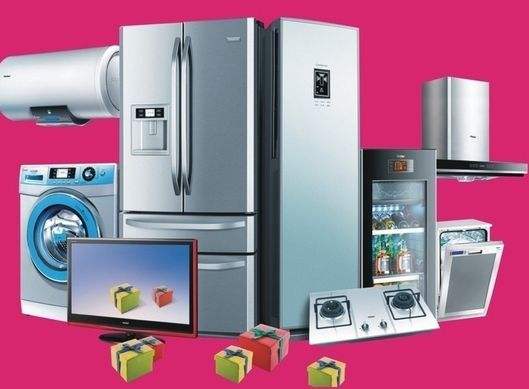Pinduoduo has been widely criticized for selling knockoff products. But as an e-commerce platform, Pinduoduo does not produce knock-off products. At best, it is just a porter of knock-off products. So the question is: Where do these counterfeit products come from?
A recent investigation by the Beijing News found that most of the TV products such as "Xiaomi Audio-visual", "Ace Jiapin", and "Konka 4K" that appeared on Pinduoduo came from workshops located in some streets in the south of Guangzhou. "As small as a power cord, as large as an LCD panel, each part has a dedicated operator, and the cost of each link is kept as low as possible. Different shops are responsible for dismantling, repairing, recycling, reinstalling, and pasting. Brands are opened between the workshops in the hut to form a rough assembly line." The description reported by the Beijing News made people feel that the more important part of the copycat product assembly line is the dismantling of old home appliances rather than the manufacture of new products—— In fact, this is exactly what is worrying.

The ability of the workshop to "keep the cost to a minimum" depends on the source of the raw materials they use: in addition to the defective products eliminated by regular home appliance companies, the largest source of supply is second-hand electrical appliances. The latter is not only cheap but also abundant. According to data from the China Renewable Resources Recycling Association, the number of scrapped household appliances in my country has increased by 20% annually in recent years. It is estimated that by 2020, the number of scrapped electronic products will reach 137 million units each year. Most of these scrapped home appliances did not enter the formal recycling channels, but flowed into the second-hand market. Some of them were simply refurbished and sold to rural and urban renters, and the other part was sold to cottage home appliances processing workshops.
This situation has led to two undesirable phenomena at the same time: regular home appliance recycling companies are "not full" and have been at a loss for a long time; illegal processing workshops use waste home appliances as raw materials to disassemble and assemble, supporting the huge knock-off home appliance market.
From this point of view, whether it is from the perspective of environmental protection or from the perspective of standardizing the market, the supervision of the recycling of waste home appliances should be strengthened. In fact, the existence of the above-mentioned problems, to some extent, reflects the imperfections of the recycling system for used home appliances. Many consumers would rather sell used home appliances to the guerrillas who walk around the streets than to the qualified regular army. On the one hand, the latter is indeed a bit stingy and the price is too low; on the other hand, there are some consumers. The person is too caressed. And this kind of calculation not only reflects the widespread existence of a backward consumption concept, but also shows that some people do not know what responsibility they should bear for the recycling of home appliances as consumers.
In many countries, the recycling and processing of household appliances has implemented a pre-payment system, allowing consumers to bear a fixed amount of recycling and processing fees. For example, Japan’s "Household Appliances Recycling Law" stipulates that consumers need to pay a certain amount of garbage disposal fees when they discard large appliances. Of course, when it comes to the issue of recycling of used home appliances, the biggest responsibility is still the manufacturer. The reason is simple: whoever enjoys the benefits must bear the corresponding responsibilities. The Waste Electrical and Electronic Products Producer Responsibility Program implemented in Hong Kong on August 1 stipulates that when citizens purchase new regulated electrical appliances, sellers must provide customers with free statutory removal services. Citizens can arrange for the delivery of new electrical appliances on the same day. An old electrical appliance of the same category was removed from the premises. At the same time, the seller must also provide the corresponding recycling label to the customer, and list the words "recycling levy" in the sales receipt.
The Hong Kong government emphasizes the responsibility of home appliance producers, which is an international practice. The current "Regulations on the Management of the Recycling and Disposal of Waste Electrical and Electronic Products" also refer to the principle of "who benefits, who is responsible", and stipulates that producers must bear environmental responsibilities during the product life cycle, and complete a series of tasks such as recycling and disposal of waste products. . In addition, the regulations also require the strengthening of standardized management of electrical and electronic product manufacturers' own or commissioned sellers, maintenance organizations, after-sales service organizations, and group-based family workshop-style processing methods, so as to promote the processing of electronic waste to corporate and professional The development of centralized processing of industrialization and industrialization.
However, the existing problems show that my country's laws and regulations on the recycling and disposal of home appliances are still incomplete, and market supervision is not satisfactory. Obviously, it is more important and critical for the government regulatory agencies to perform their duties and perform their duties than producers and consumers. Only when all those responsible take action and guard the entrances and exits of used household appliances can they end well, and can also make some cottage household appliances die out due to the supply of raw materials.
Guangzhou Yunge Tianhong Electronic Technology Co., Ltd , https://www.e-cigaretteyfactory.com
